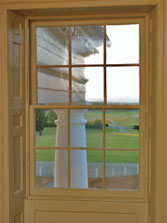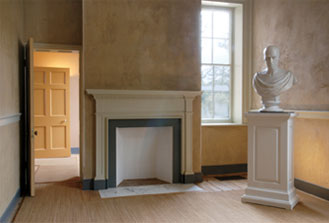Montpelier's Shrunken State Is Fit for a President
The DuPonts replastered the interior walls in the Madison-era house, where the layout of rooms changed dramatically. While the original lath was mostly intact, restorers removed the 20th-century plaster and replaced it with a recipe similar to the one used by Madison-one that once again consisted of lime (which would not hold moisture in the walls as the modern formula had). Fifty-six pounds of horsehair were incorporated into the scratch coat. Extensive paint analysis determined colors. Painters applied hand-ground pigments using round and oval-shaped animal-hair brushes to re-create the authentic sinewy texture and gloss. Investigations to determine original wall coverings are ongoing.
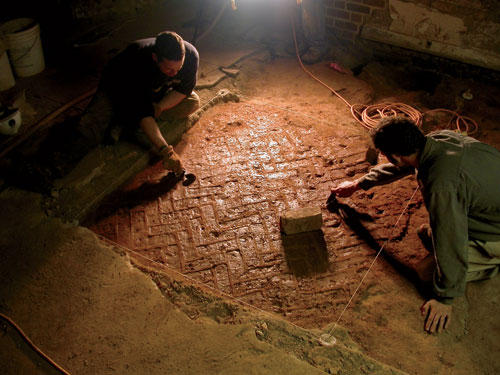 |
In the cellar, archaeologists reveal the herringbone pattern of Dolley Madison's brick kitchen floor. Photo courtesy The Montpelier Foundation |
Â
Much of the original heart-pine floors survived and were refinished by hand rather than with a sander. Unlike modern wood floors, whose planks are uniformly sized by machine, these floors contain boards of random widths. If one needed to be replaced, a comparable old-growth board would replace it. These were either found recycled in other parts of the house or on the property. In one case, a recycled baseboard was discovered holding laths supporting 20th-century ceiling plaster. In another, a nearby bowling alley-one of the oldest in the country-was found to contain original wood from the house. In other instances, restorers acquired salvaged timber from old, disused New England mills. Where necessary, original floors were patched with carefully fitted plugs, or "dutchmen," repairing damage caused by insects and installations of heating and plumbing.
The concrete over the cellar floor was removed to reveal the herringbone brick pattern of Dolley's kitchen floors. (The cellar is the only spot in the house where a new steel beam had to be inserted. Throughout the rest of the house, steel is used sparingly for connections only.)
Most of the Madison-era woodwork, including mantels, door frames, cornices, and window surrounds, survived. Even many of the original window panels withstood the test of time, their wavy glass providing warped views of the rolling hills beyond. To restore interior framing and partitions, architectural investigators looked at mortises in floors and ceilings that once held wall studs in place. Surviving nail holes and paint colors also provided clues.
|
|||
|
Photos courtesy The Montpelier Foundation |
||
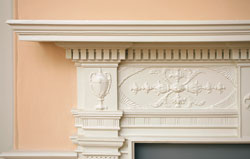 |
|||
Â
More difficult to determine is the look and arrangement of Madison's furniture. Historians and curators continue to research and analyze data that gives insight into room use, furnishings, and the Madisons' lifestyle.
"Prior to the restoration, we were essentially giving tours of the DuPont mansion," says Jeanes. "You would walk past the room where Madison died and it had been transformed into a hallway. It was almost impossible to see Madison in this house. All that has changed." As one of the last of the founding fathers' homes to be restored, Montpelier now gives a more complete picture of this country's pivotal, early days.
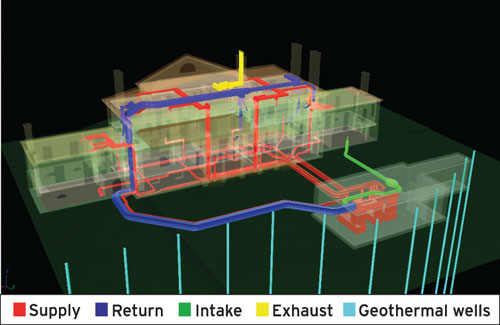 |
An off-site bunker controls and monitors airflow. Image courtesy MCWB Architects |




